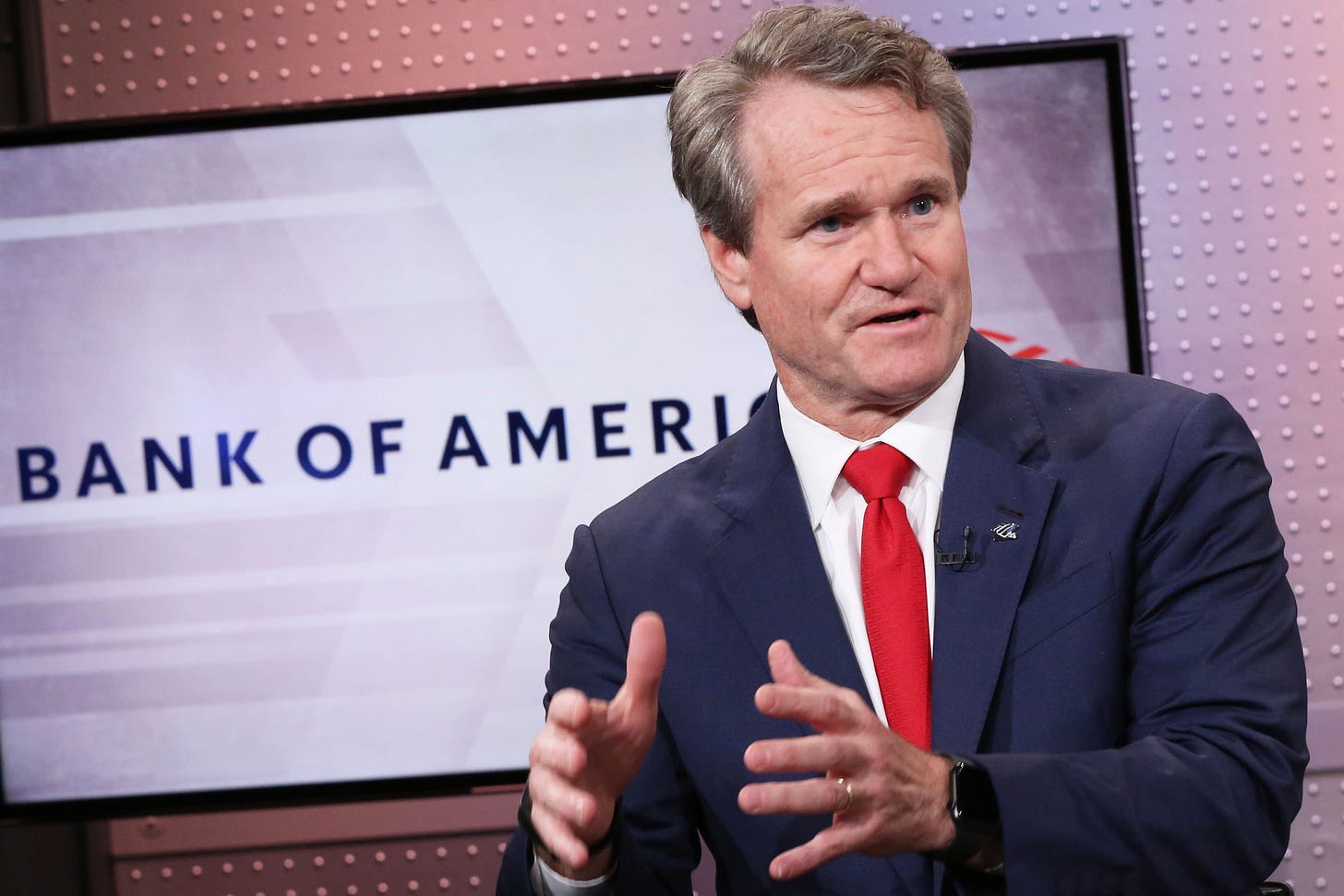Window on America
Inside Bank of America’s investor day – and what it says about the US economy
Last week’s post, Bubble Trouble, was very widely read – it’s clearly a topical issue. Any thoughts or feedback, drop me a line. This week, we’re back to banking. I’ve written about JPMorgan here before and Citigroup and Wells Fargo, but Bank of America has mostly escaped my scrutiny. Let’s address that.
I first met Brian Moynihan in early 2010, in a wood‑paneled room at Claridge’s. He was passing through London a few weeks into his appointment as Bank of America’s CEO and carved out some time to meet a small group of investors. The bank was still reeling from the financial crisis and the costly Merrill Lynch and Countrywide acquisitions he had inherited. The following year, at a charity dinner, Blackstone’s Stephen Schwarzman needled him: “Brian Moynihan is here tonight. He’s the CEO of Bank of America. As many of you know, Brian’s brother Patrick runs a Catholic boarding school in Haiti. Their parents must be so proud to see two of their boys running an under-funded, non-profit organization.”
Fifteen years later, Moynihan is still at the helm, making him the second longest serving CEO of a major US bank, behind Jamie Dimon at JPMorgan. (His brother stepped down as president of The Haitian Project in 2019.) With the stock close to reclaiming its November 2006 all‑time high, the company this week hosted a glitzy investor day in Moynihan’s hometown of Boston. Over six hours of presentations, Moynihan and his team articulated the company’s positioning, strategy and financial outlook.
Investor days are commonplace – JPMorgan hosts one every year. They impose discipline on management and educate the market on the contours of a business. This month alone, Adyen, S&P Global, Deutsche Bank, Block and Edenred will host them – companies I’ve discussed here before. But for Bank of America, a full‑scale investor day is a novelty. As one of the country’s largest financial intermediaries, with relationships across a third of US households, the event doubles as a window into the economy. To see what the numbers say – and where the risks lie – read on.

